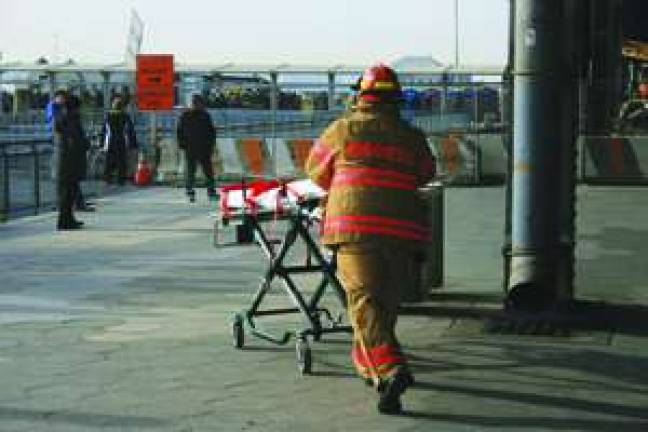Ferry Resumes Service After Last Week's Crash

SeaStreak accident left more than 70 passengers injured By Caroline Lewis With a full investigation under way, the SeaStreak resumed full service this week, ferrying commuters between Atlantic Highlands, N.J., and Wall Street. Many passengers on board were already out of their seats and moving toward the exit of the SeaStreak Wall Street vessel, ready to make their way to work, when it crashed into Pier 11 on its second trip of the day last Wednesday morning. As Captain Jason Reimer rushed between the ferry's control stations trying to get one of the recently modified consoles to respond, both diesel engines shut down. More than 70 of the 326 passengers and five crew members on board were injured, sustaining minor to serious head injuries. "I woke up about 6 feet from where I was standing," said ferry passenger Ashley Furman, who was visibly shaken after the crash. She said she sat with two women she knew who were bleeding until medics came to load them into ambulances. In July, the SeaStreak Wall Street was converted from a water jet system to a controllable pitch propulsion system and the new system is under investigation as one possible cause of the accident. "The engine remained the same; it was the propulsion system that actually changed," said Robert Sumwalt in his last update on the investigation of the accident by the National Transportation Safety Board (NTSB). "Since we purchased the company in the spring of 2008, we have implemented numerous changes to the vessels and the service, many of which relate to safety," SeaStreak President James Barker wrote on the company's website. A spokesperson for SeaStreak says the NTSB has requested that the company not comment on the cause of the accident, sentiments of the captain or crew, or future safety measures they plan to take until the investigation is completed. He did say that the company is reaching out to passengers on its Facebook page, where the company has received an outpouring of positive support. Captain Reimer, at the helm at the time of the accident, was the most experienced captain at SeaStreak , the NTSB discovered. He had conducted the sea trials of the vessel after it was modified and he was also responsible for training other crew members on how to operate it. The NTSB is speaking with passengers and has interviewed the crew members, who were all breathalyzed and determined to be sober immediately following the incident. "Each of these crew members is shaken and very concerned about the accident," said Sumwalt, following initial contact with the SeaStreak team. The NTSB and SeaStreak Wall Street's engine manufacturer are in the process of reviewing closed-caption video of the engines. According to Sumwalt, this new information may shed light on the specific cause of the accident. By one account, crew members have grumbled about the vessel's new propulsion system, saying itwas more difficult to operate. "I was talking to one of the employees, and he was telling me that none of these guys like this boat-the captains-because it has something different. It's not jet-propelled or something," eyewitness Dee Wertz told the Associated Press after the accident. "After he said that, literally, the front of the boat hit into the corner of the barge." This is not the first accident for SeaStreak, or even this particular vessel, according to U.S. Coast Guard records. The same ferry (with the previous propulsion system) was involved in a crash of unspecified cause in 2010. Since 2007, SeaStreak vessels have been involved in 10 separate incidents. New York City used SeaStreak to expand ferry service to the Rockaways after Sandy shut down subways. According to a spokesperson from the New York City Economic Development Corporation, the expanded service has been very popular and the Request for Proposals from other companies to permanently run the service remains.